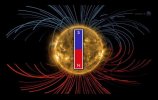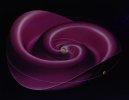Silveryblue
Jedi
Noticed it down in NZ also. I am fair & get sunburn readily even in cloudy weather. I can't stand in the sun any more - have to find shade & we are in early Autumn.
I recently pulled out an old photo taken with my first camera - an old box brownie donated by an Aunt when I was about 9. The sky was as I remember it as a child - deep blue in mid summer. This past summer the sky was much paler even on a cloudless day. I would be interested to hear if anyone else has photos from decades ago who can check. Note that file development was old style back then. My photos from the 70's-80's are faded brown & fuzzy.
If we are currently going through a debris field (comets anyone?) then couldn't that also be affecting the sun with more "fuel"?
It is possible that not only is the sun hotter, but the decrease in BBM atmosphere depth is combining to produce such a noticeable effect despite the efforts of the chemtrail crews to apply a filter? And if rotation has slowed even a little bit, we are staying in the rays a little longer also.
I recently pulled out an old photo taken with my first camera - an old box brownie donated by an Aunt when I was about 9. The sky was as I remember it as a child - deep blue in mid summer. This past summer the sky was much paler even on a cloudless day. I would be interested to hear if anyone else has photos from decades ago who can check. Note that file development was old style back then. My photos from the 70's-80's are faded brown & fuzzy.

If we are currently going through a debris field (comets anyone?) then couldn't that also be affecting the sun with more "fuel"?
It is possible that not only is the sun hotter, but the decrease in BBM atmosphere depth is combining to produce such a noticeable effect despite the efforts of the chemtrail crews to apply a filter? And if rotation has slowed even a little bit, we are staying in the rays a little longer also.




